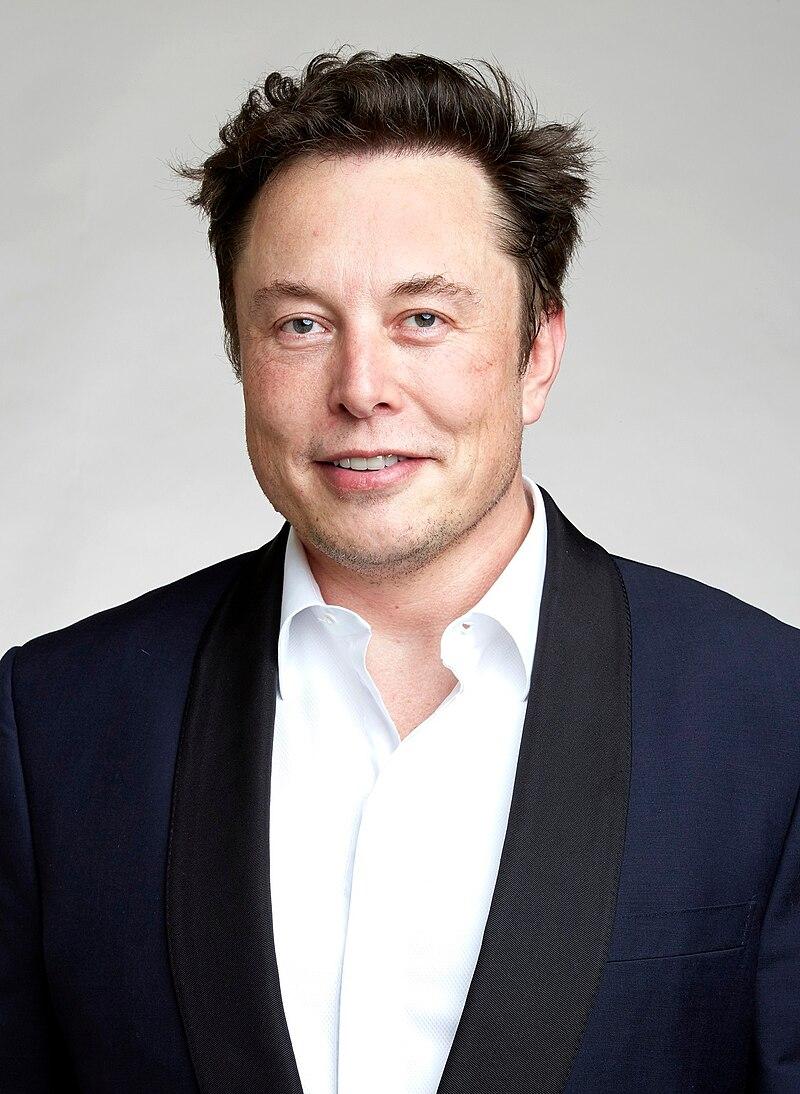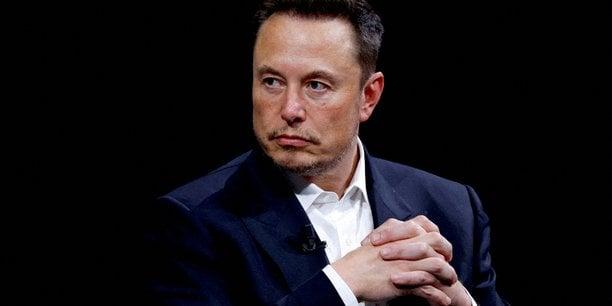Elon Musk’s Bold Vision: Can He Really ‘Delete’ the CFPB?
In the rapidly evolving landscape of American finance and regulatory oversight, few figures capture the public’s imagination quite like Elon Musk. Renowned for his audacious ventures in electric vehicles and space exploration, Musk’s latest pronouncement—suggesting the removal of the Consumer Financial Protection Bureau (CFPB)—has ignited a spirited debate about the future of consumer rights and regulatory authority. But what does it mean to “delete” an agency that emerged from the ashes of the 2008 financial crisis, and can a singular vision truly reshape the intricate web of financial regulation? As we delve into Musk’s provocative stance, we will explore the implications of his proposal, the history and purpose of the CFPB, and the broader conversation around government oversight in an era marked by rapid technological advancement and shifting economic dynamics. Join us as we navigate the intersection of ambition, policy, and the protection of consumers in this pivotal moment for U.S. financial regulation.
Elon Musks Challenge to Consumer Protection: Understanding the CFPB Landscape
The landscape of consumer protection is evolving, and few figures have stirred the pot quite like Elon Musk. His bold proclamations about the Consumer Financial Protection Bureau (CFPB) have sparked a dialog about the future of consumer advocacy in America. With Musk’s significant influence, some are left questioning whether his vision could reshape or even dismantle the regulatory framework designed to protect consumers from financial exploitation. The CFPB, established in the wake of the 2008 financial crisis, serves as a formidable guardian for individuals navigating the complex world of finance. However, Musk’s rhetoric suggests a desire to shift the balance of power, prioritizing innovation and competition over regulatory oversight.
- Regulatory Impact: The CFPB has been instrumental in enforcing consumer rights and ensuring transparency from financial institutions.
- Innovation vs. Regulation: Musk advocates for a more unrestrained business environment, arguing that excessive regulation stifles creativity.
- Potential Consequences: A weakened CFPB could lead to increased risks for consumers, particularly in sectors such as lending and investment.
As we dissect Musk’s challenge, it is crucial to consider both the *potential benefits* and *risks* associated with diminishing consumer protection regulations. By examining past interactions between large tech companies and financial regulations, we can better understand the implications of Musk’s propositions. For instance, the conflict could mirror themes seen in the debates surrounding the regulation of tech giants and their impact on privacy and data security. The following table illustrates some key comparisons between the CFPB’s objectives and Musk’s vision:
| CFPB Objectives | Musk’s Vision |
|---|---|
| Consumer Education | Consumer Autonomy |
| Fair Lending Practices | Market-Driven Solutions |
| Protection from Fraud | Innovation-First Approach |
The Rationale Behind Musks Vision: The Case for Redefining Regulatory Bodies
Elon Musk’s push to challenge existing regulatory frameworks stems from a belief that they often stifle innovation and economic growth. He advocates for a model where regulatory bodies are not entrenched in bureaucracy but instead operate as agile entities capable of swiftly adapting to technological advancements. Musk’s vision includes redefining the roles of these organizations to focus on enabling rather than inhibiting progress. In his view, outdated regulations can create unnecessary obstacles for startups and disruptors that drive the economy forward.
In Musk’s ideal world, regulatory bodies would prioritize transparency and consumer protection while being flexible enough to accommodate rapid changes in technology. He suggests a few reforms to achieve this vision, including:
- Eliminating redundant regulations that hinder competition.
- Implementing a more collaborative approach between tech companies and regulators.
- Utilizing technology to streamline processes, enhancing efficiency to benefit all stakeholders.
| Regulatory Aspect | Current State | Musk’s Proposal |
|---|---|---|
| Bureaucracy Level | High | Minimal |
| Response Time | Slow | Rapid |
| Flexibility | Low | High |

Potential Impacts of Eliminating the CFPB: A Closer Look at Consumer Rights and Market Stability
The potential elimination of the Consumer Financial Protection Bureau (CFPB) raises pressing questions about consumer rights and the stability of the financial market. Without the regulatory oversight the CFPB provides, consumers could face increased risks, such as predatory lending practices and hidden fees. One of the key functions of the CFPB is to enforce laws that protect consumers in financial transactions. If this agency were to disappear, we might see an uptick in abuses by financial institutions, leading to a lack of trust in the market. Additionally, without a dedicated body to address consumer complaints and enforce regulations, the consequences could ripple throughout the economy, ultimately affecting all consumers.
Market stability hinges on transparency and accountability, two principles that the CFPB has worked to uphold. If the agency were dismantled, it would be crucial to consider alternative mechanisms to protect consumers. Potential consequences include:
- Increased Financial Vulnerability: Consumers may not have adequate recourse against unfair practices.
- Market Volatility: A lack of oversight could destabilize financial institutions, leading to larger economic crises.
- Diminished Consumer Confidence: Without enforcement of consumer rights, people may hesitate to engage in financial markets.
To visualize the impact of eliminating the CFPB, consider the following:
| Impact | Potential Outcome |
|---|---|
| Increased Predatory Practices | Higher incidence of scams and financial exploitation |
| Decline in Market Transparency | Consumers unable to make informed financial choices |
| Regulatory Gaps | Emergence of harmful financial products |

Navigating the Future: Recommendations for Balancing Innovation with Consumer Protections
As the landscape of financial services evolves, it is imperative to foster innovation while safeguarding the interests of consumers. Policymakers and industry leaders must collaborate to establish frameworks that encourage disruptive advancements, all the while ensuring that consumer protections remain robust and effective. This can be achieved through the implementation of multi-stakeholder dialogues, where innovative ideas can be explored without undermining essential ethical standards. Such dialogues should focus on:
- Flexible Regulatory Approaches – Adapt existing regulations to better accommodate new technologies.
- Consumer Education Initiatives – Inform users about emerging financial products and potential risks.
- Risk-based Assessments – Evaluate the impact of innovations on different consumer segments before deployment.
Additionally, leveraging technology to enhance consumer protection could prove beneficial. By employing data analytics, platforms can recognize and mitigate fraud patterns, whilst investing in adaptive learning systems can help regulatory bodies keep pace with rapidly changing technologies. A collaborative ecosystem might include:
| Stakeholder | Action |
|---|---|
| Policymakers | Initiate regular reviews of regulatory frameworks. |
| Financial Institutions | Adopt AI tools for real-time consumer risk assessments. |
| Consumer Advocacy Groups | Engage in continuous dialog with tech developers. |
Insights and Conclusions
Elon Musk’s audacious proposal to ‘delete’ the Consumer Financial Protection Bureau (CFPB) encapsulates his broader ambitions to reshape regulatory landscapes in favor of innovation and disruption. Whether this vision will materialize remains a topic of intense debate, as stakeholders from all corners weigh in on the potential implications for consumer welfare and financial stability. As we move forward, the conversation surrounding such bold assertions will likely continue to evolve, challenging us to examine the delicate balance between protection and progress. For now, the future of the CFPB hangs in the balance, and only time will tell if Musk’s dreams of a streamlined financial system are destined for realization or relegation to the realm of ambition.
